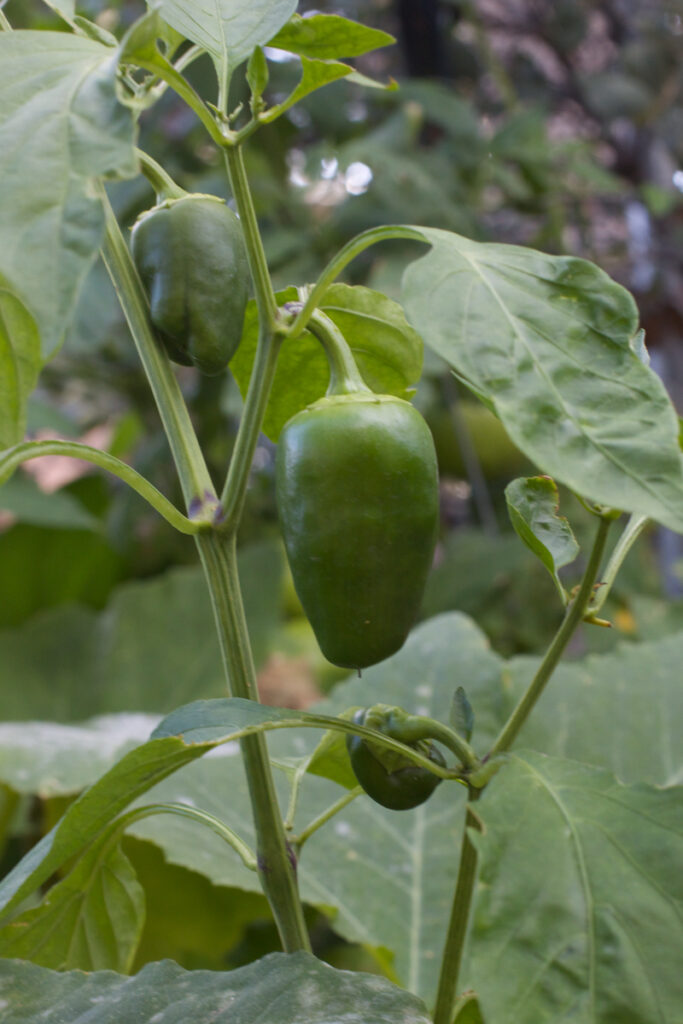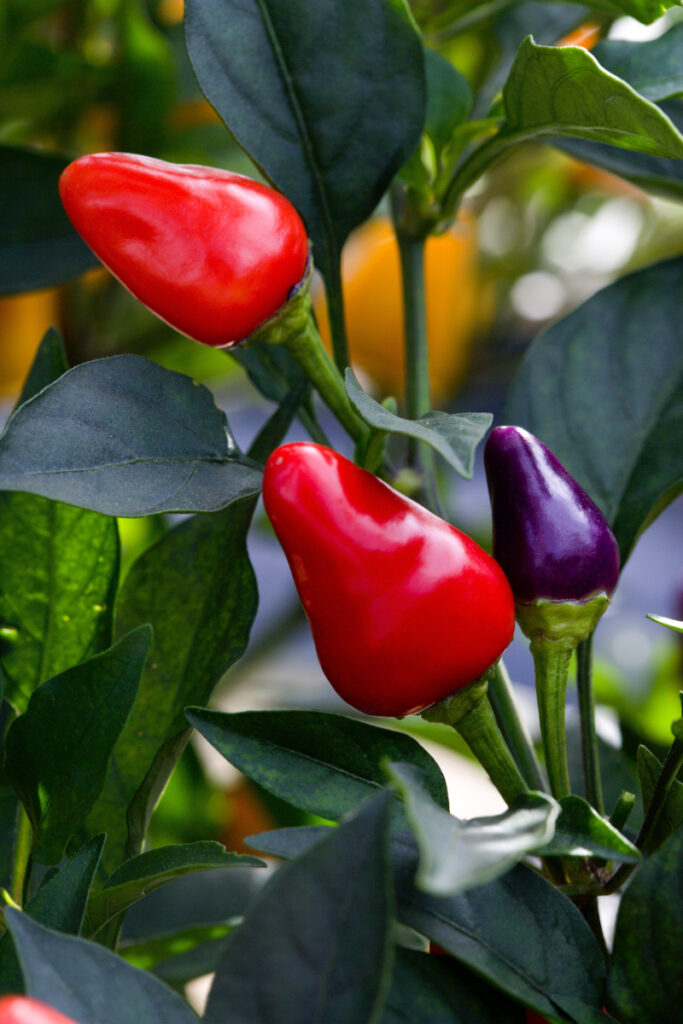Spice Up Your Life: How to Grow Pimento Peppers
I’ve always had a love for spicy food, and as I started growing my own produce, I knew that pimento peppers would be a great addition to my garden. Not only do they add a delicious kick to a variety of dishes, but they are also fun to grow and care for.
Growing my own pimento peppers has been an incredibly rewarding experience. There’s something special about watching the small plants grow into full-size bushes and seeing the bright red fruit appear. Plus, knowing that they are free from any pesticides or chemicals makes them even more enjoyable to eat.
If you’re new to gardening or just looking to try something new, I highly recommend giving pimento peppers a shot. Not only are they relatively easy to grow, but their unique flavor and versatility make them a worthwhile addition to any garden.
In this guide, I’ll share everything I’ve learned about growing pimento peppers, from selecting the right varieties to caring for your plants and harvesting your bounty. With a little bit of patience and some TLC, anyone can enjoy the delicious satisfaction of growing their own pimento peppers.
Adding Heat to Your Garden: A Guide to Growing Pimento Peppers

Understanding Pimento Peppers – Varieties and Characteristics
Before you start growing pimento peppers, it’s important to understand the different types and characteristics of this popular pepper. Pimento peppers are a type of sweet pepper that are typically mild in heat, making them perfect for those who enjoy the flavor of peppers without the burn.
There are several different varieties of pimento peppers, and each has its own unique characteristics. Some of the most popular types include:
- Sweet Cherry Peppers: These small, round peppers have a sweet, fruity flavor and are often used in pickling and canning.
- Spanish Pimentos: These large, heart-shaped peppers have a thick, juicy flesh and are often stuffed with cheese or meat.
- Hungarian Pimentos: These peppers are similar in appearance to Spanish pimentos, but have a slightly spicier flavor.
When selecting pimento pepper varieties to grow, consider your personal taste preferences as well as the growing conditions in your area. Pimento peppers prefer warm, sunny locations with well-draining soil and benefit from regular watering and fertilization.
In addition to their delicious flavor, pimento peppers are also packed with nutrients, including vitamin C, fiber, and antioxidants. Adding pimento peppers to your diet can help boost your immune system and promote overall health and well-being.
Starting Your Pimento Pepper Garden – Preparing the Soil and Planting
To start your own pimento pepper garden, it’s important to prepare the soil and choose the right location for your plants. Pimento peppers thrive in warm, sunny areas with well-draining soil that is rich in organic matter.
Before planting your pimento peppers, prepare the soil by removing any weeds or debris and loosening the soil to a depth of at least 6 inches. If your soil is heavy or clay-like, consider adding compost or other organic matter to improve drainage and fertility.
When selecting a location for your pimento pepper plants, look for a spot that receives at least six hours of direct sunlight per day. Pimento peppers also prefer slightly acidic soil with a pH between 6.0 and 7.0.
Once your soil is prepared and you’ve chosen the perfect location, it’s time to plant your pimento peppers. Start by digging holes that are slightly larger than the root ball of your plants, then gently remove each plant from its container and place it in the hole. Be sure to space your plants at least 18 to 24 inches apart to allow for adequate air circulation and prevent overcrowding.
After planting your pimento peppers, water them thoroughly and provide them with a light application of fertilizer to help them get off to a strong start. With regular care and attention, your pimento pepper plants will begin to grow and produce delicious fruit in no time.
Caring for Your Pimento Plants – Watering, Fertilizing, and Pruning
While pimento peppers are relatively easy to grow, they do require regular care and attention to ensure healthy growth and maximum yield. Here are some tips for caring for your pimento pepper plants:
Watering
Pimento peppers require regular watering to thrive, especially during hot, dry weather. Water your plants deeply once or twice a week, depending on the weather conditions and soil moisture levels. Be sure to water at the base of the plants and avoid getting the leaves wet, as this can increase the risk of disease.
Fertilizing
Pimento peppers benefit from regular fertilization throughout the growing season. Use a balanced fertilizer with equal amounts of nitrogen, phosphorus, and potassium, and apply it every four to six weeks. You can also supplement with organic fertilizers like compost or worm castings for added nutrient benefits.
Pruning
To promote healthy growth and fruit development, it’s important to prune your pimento pepper plants regularly. Remove any dead or damaged branches, as well as any suckers that appear at the base of the plant. This will allow for better air circulation and light penetration, which can improve yield and reduce the risk of disease.
Harvesting
When your pimento peppers are ripe, they will turn from green to bright red and become slightly soft to the touch. Use a sharp pair of shears to cut the peppers from the plant, taking care not to damage the stems or surrounding fruit. Harvest your peppers regularly to encourage continued growth and maximum yield.
Protecting Your Pimento Plants – Pest and Disease Control
While pimento peppers are generally easy to grow, they can be susceptible to a variety of pests and diseases that can impact their growth and yield. Some common pests that may affect your pimento pepper plants include aphids, spider mites, and whiteflies, while diseases like bacterial spot and blossom end rot can also cause issues.
To protect your plants from pests and disease, it’s important to practice good garden hygiene and take preventative measures. This includes regularly inspecting your plants for signs of damage or infestation, removing any dead or diseased plant material, and avoiding overwatering or overcrowding.
If you do notice signs of pests or disease, there are a variety of organic and chemical treatments that can help. For example, neem oil or insecticidal soap can be effective at controlling common pests like aphids and mites, while copper fungicides may help control bacterial spot.
While it’s important to take action if you notice any issues with your pimento pepper plants, prevention is always the best strategy. By maintaining healthy plants and practicing good garden hygiene, you can minimize the risk of pests and disease and enjoy a bountiful harvest of delicious peppers.
Harvesting and Preserving Your Pimento Peppers – Techniques and Storage

When your pimento peppers are ready to harvest, it’s important to use the right techniques to ensure maximum flavor and freshness. The best time to harvest pimento peppers is when they are fully ripe and have turned bright red, usually around 70-80 days after planting.
To harvest your pimento peppers, use a sharp pair of shears to cut the fruit from the plant, taking care not to damage the surrounding stems or fruit. You can either use your peppers fresh or store them for later use.
If you plan to use your pimento peppers within a few days, simply store them in the refrigerator in a plastic bag or airtight container. For longer-term storage, there are several preservation methods you can use, including freezing, canning, and drying.
To freeze pimento peppers, simply wash and dry them thoroughly, then place them in a single layer on a baking sheet and freeze until solid. Once frozen, transfer the peppers to an airtight container or freezer bag and store in the freezer for up to six months.
Canning is another great option for preserving pimento peppers. To can your peppers, start by washing and slicing them into small pieces, then boiling them in vinegar and water with salt and sugar. Pack the peppers into sterilized jars and process them in a water bath canner according to safe canning guidelines.
Finally, you can also dry your pimento peppers for long-term storage. To dry your peppers, simply wash and dry them thoroughly, then string them up with a needle and thread and hang them in a warm, dry location until they are fully dehydrated.
Cooking with Pimento Peppers – Recipes and Ideas
Pimento peppers are a versatile ingredient that can be used in a variety of dishes, from appetizers and sides to main courses and desserts. Here are some ideas for using pimento peppers in your cooking:
Stuffed Pimento Peppers
Cut the tops off of your pimento peppers, remove the seeds and membranes, and stuff them with a mixture of cheese, breadcrumbs, and herbs. Bake until the cheese is melted and the peppers are tender.
Pimento Cheese Spread
Mix shredded cheddar cheese, mayonnaise, diced pimento peppers, and a dash of hot sauce for a delicious and easy-to-make spread that’s perfect for crackers, sandwiches, or burgers.
Pimento Mac and Cheese
Add diced pimento peppers to your favorite mac and cheese recipe for a tangy twist on this classic comfort food.
Grilled Pimento Peppers
Brush whole pimento peppers with olive oil and grill until the skin is charred and blistered. Serve as a side dish or chop and add to salads or pasta dishes.
Pimento Pepper Jelly
Combine diced pimento peppers, sugar, and vinegar to make a sweet and tangy jelly that’s perfect for spreading on crackers or serving with cheese.
These are just a few ideas for using pimento peppers in your cooking. Experiment with different recipes and techniques to discover your own favorite ways to use these delicious peppers.
Conclusion: Enjoying the Fruits of Your Labor
Growing your own pimento peppers can be a fun and rewarding experience, from selecting the right varieties and planting your garden to caring for your plants and harvesting your bounty. By following the tips and techniques outlined in this guide, you can enjoy a bountiful harvest of sweet, flavorful peppers that are free from pesticides and chemicals.
Not only do pimento peppers add delicious flavor and nutrition to your meals, but they also provide a sense of satisfaction and accomplishment that comes from growing your own food. Whether you’re a seasoned gardener or a first-time grower, pimento peppers are a great addition to any garden and can provide years of enjoyment.
So why not give pimento peppers a try in your own garden? With a little bit of patience, care, and attention, you’ll be rewarded with a delicious harvest of sweet, flavorful peppers that are sure to spice up your life.